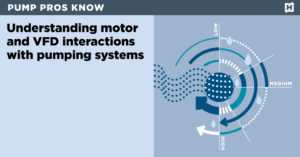Benefits of Variable Frequency Drives
Variable Frequency Drives
The use of variable frequency drives (VFDs) to control AC motor speeds allows facilities to achieve optimum power utilization, improving overall plant efficiency. This technology is a must for industrial applications that require high levels of reliability, precision control and integration with plantwide automation systems.
A VFD drive consists of three main parts: an inverter, a controller and a feedback device. The inverter converts low voltage dc power into high-voltage ac power to drive the motor. The inverter’s output signal then passes through the feedback device. This feeds back information about the motor’s performance to the inverter, causing it to adjust the power fed to the motor.
There are several types of VFD drives available, each with varying features that best suit particular applications and environments. The most popular in industry is the pulse-width modulation (PWM) design. This method involves varying the inverter’s power devices, typically transistors or insulated-gate bipolar transistors (IGBTs), on and off many times per second to simulate a sinusoidal wave. The width of the pulses determines the frequency and the voltage that are fed to the motor, allowing the VFD to control the motor’s speed.
Other designs of VFDs exist, but are less common. The current source inverter and the voltage source inverter designs are used primarily in higher-power industrial applications, such as pumps or compressors. This is because these drives offer lower capital cost and superior efficiencies over traditional DC drives.

Benefits of Variable Frequency Drives
Using a VFD can reduce maintenance costs by prolonging the life of the mechanical system. When motors run at full capacity, they can put stress on the system and cause bearings, gears and other components to wear out faster than they would if the motor were running at a slower rate. By using a VFD to control motor speed, equipment is able to run smoothly and at an optimal speed, increasing the lifespan of the system.
Energy savings are another important benefit of a VFD. The technology is ideal for electric motors that don’t need to operate at 100-percent capacity all the time, such as fans and pumps in ventilation, heating, air conditioning and process-pumping applications. By outfitting them with a VFD, facilities can keep the motors at a lower speed that matches their load requirements, saving energy when the full output isn’t needed.
Modern drives also include a range of integrated features that improve operation and safety. They can detect and correct issues like harmonics, which can damage the inverter and shorten its operating life. They can also prevent overloading by monitoring the current drawn by the motor and adjusting the input power accordingly. Additionally, many VFDs now support Ethernet communication with various industrial protocols, enabling them to accept commands and status information from higher-level components such as PLCs. This can simplify the installation, maintenance and diagnostics process for facility engineers.